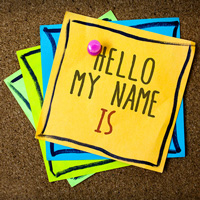Tips When Starting to Fingerspell
There are two aspects to fingerspelling: doing it yourself (expressive) and seeing and understanding someone else doing it (receptive).
Here are some beginning guidelines for expressive fingerspelling:
1. Fingerspell words, not letters.
As you fingerspell, think of the sound of the word (VIOLETS), not the individual letters that make up the word: (V-I-O-L-E-T-S).
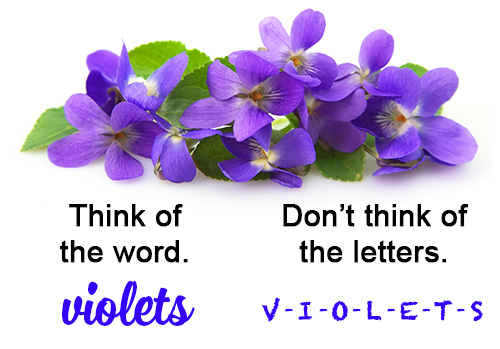
This will contribute to your rhythm and to the receiver’s ability to decode a recognizable pattern of movements created by the sequence of shapes, not just a string of letters. Say the word as you fingerspell it, NOT the letters. Do this AS you are fingerspelling it. Do not say the word prior to beginning to fingerspell it or afterwards like an echo.
If you look closely, you can see I’m mouthing the word I’m spelling, “violets.” I am not mouthing how to spell the word: V-I-O-L-E-T-S.
2. Slightly shift your hand as you fingerspell.
As you spell, your hand moves slightly away from your body - to the right if you are right-handed and to the left if you are left-handed throughout the production of the word. The movement is small. Do not pile letters on top of the other in the same space.
The shift in movement made when going from letter to letter while fingerspelling may be so minor that it may not be that obvious. However, if you look where the first letter was fingerspelled and where the last letter was fingerspelled, you should notice a slight shift away from the center of the signer’s body. It’s more obvious when a longer word is spelled (because there are more letters in the word).
3. Pause at the end of each word.
Hold the last letter an additional beat to show completion, especially if another fingerspelled item follows.
Watch closely, and you will see the last letter (d) of the first word (hand) is held for an extra beat before moving on to the second word (sanitizer).
4. Smooth and Steady Wins the Race
Fingerspelling is not a sanctioned Olympic event; there are no medals for speed. Clarity and developing a smooth, consistent rhythm or cadence within your whole signed message is the most important skill.
5. Start with your name and practice.
Practice the pattern of movements created by the sequence of shapes as you spell your first and last name until you can produce them smoothly. This is usually the first thing you spell when you meet a deaf person, and it is a relief to cross the hurdle without a mistake.
 Brenda Cartwright is a seasoned interpreter, a master teacher, well known presenter, and author of several best selling sign language and interpreting textbooks from the RID Press. For 35 years Brenda was the Chair of the Sign Language Interpreter Program at Lansing Community College in Lansing, Michigan.
Brenda Cartwright is a seasoned interpreter, a master teacher, well known presenter, and author of several best selling sign language and interpreting textbooks from the RID Press. For 35 years Brenda was the Chair of the Sign Language Interpreter Program at Lansing Community College in Lansing, Michigan.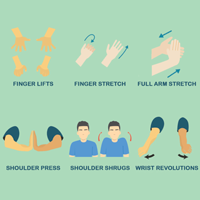 Fingerspelling Warm-Up Activities to Prevent Repetitive Motion Injuries
Fingerspelling Warm-Up Activities to Prevent Repetitive Motion Injuries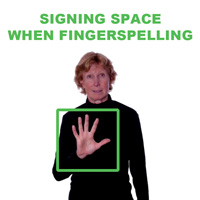 Signing Space When Fingerspelling
Signing Space When Fingerspelling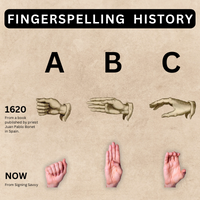 Fingerspelling History
Fingerspelling History



